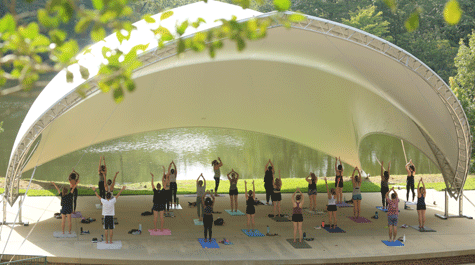W&M ramps up student engagement, support for second semester
William & Mary staff rolled out several initiatives to help students during the second semester of the academic year.
A year into physical distancing measures for COVID-19, staff are finding new and innovative ways to keep students involved and connected, including 20 events in 21 days and a virtual student club and organization fair.
Now, Student Affairs has partnered with Health & Wellness to offer students access to a new app called Nod, which is an evidence-based app to help students build connections. Nod can be downloaded on the App Store or Google Play.
T Davis, assistant director of health promotion, coordinated implementation of the Nod app.
“Nod is an app designed to combat the negative impact of loneliness on college student’s mental health,” Davis said. “It is an app that empowers students to build authentic social connections.”
Nod addresses the psychological foundations of loneliness using skill-building challenges and reflection exercises to break social goals down into achievable steps, according to its founders. Nod is designed to support students across learning environments including on campus, hybrid and fully remote.
Because loneliness is a contributing factor to student attrition, poor mental health and unhealthy coping behaviors on campuses, loneliness among students needs to be addressed, according to Davis.
According to National College Health Association- National College Health Assessment III survey data, 47.8% of W&M students, including undergraduate and graduate students, scored positive for loneliness prior to the pandemic, according to Davis. Anecdotally, the pandemic has caused many to be more isolated, and thus this percentage is likely higher now.
Davis saw a presentation about Nod at the NASPA, Student Affairs Administrators in Higher Education annual meeting in the fall.
“I found it to be interesting and decided to contact the proprietor for more information,” Davis said. “Being alone is not synonymous to being lonely; you can be in a room full of people and be lonely. After reviewing our ACHA-NCHA III data, it was a no-brainer.”
Davis talked with Jennifer Cross, director of research at the W&M Center for Gifted Education and co-chair of the W&M Suicide Prevention Coalition. Cross said she has been so excited about the Nod app ever since she first learned about it through W&M’s work with the Jed Foundation, which is a non-profit organization that protects emotional health and prevents suicide for teens and young adults in the U.S.
“In working to build social connections among W&M students as part of our efforts at suicide prevention, Nod is the perfect resource,” Cross said. “The app applies important psychological research to help students better connect with their peers. People tend to think that making friends is easy, because we see how others can do it without even seeming to try.
“Connecting with others is not always easy, though. All of us can struggle, even those who make it look effortless. Nod smooths the path, offering advice and encouraging us to break out of our past ways of thinking about how we make friends in simple and fun ways. I think W&M students are going to enjoy the app and will benefit from it. I hope we can get everyone to give it a try.”
Davis said students may not have needed to learn the skills necessary to make long-lasting deep connections when they were younger.
“When students are in middle school, it is likely they form a friend or friend group and those individuals, for the most part, go to high school together and thus there is no need to learn the skills necessary to make friends,” Davis said. “Then you leave your friends, come to college, and find yourself in a new environment with no friends and no skills to make deep connections. And though you are in a school with thousands of people, you find yourself alone.”
To be clear, Davis added, making friends does not negate loneliness. You can have friends and not feel connected.
“While the example I gave may speak to the freshman experience, this app is not just for freshmen,” Davis said. “The 47 percent of students who surveyed as being positive for loneliness were undergrad and graduate students. A part of what Nod offers is tools to assist students in making deep connections with others, which I think is needed during this pandemic more than ever.”
The app is one of many efforts this semester to help students connect. Student Unions & Engagement offered 20 events in 21 days to get students connected to the university outside of academics while maintaining physical distancing.
Ranging from arts and crafts to music, games and food, activities covered a wide variety of interests.
Also to start off the second semester, more than 200 student clubs and organizations reached out to students during virtual events on Jan. 25 and 26.
Common interest organizations and club sports were featured in the Jan. 25 fair, while student organizations and activities groups were split into two sessions on Jan. 26. Approximately 450 students participated in the fairs.
“We are deeply committed to fostering deep human connection for all students,” said Drew Stelljes, assistant vice president for student engagement and leadership.
“We modified the way we deliver opportunities for engagement and leadership to ensure student health during the pandemic. We're thrilled to welcome students into groups that align with their values. Engagement inspires creativity and discovery, critical thinking and connection.”
 Skip to main content
Skip to main content

